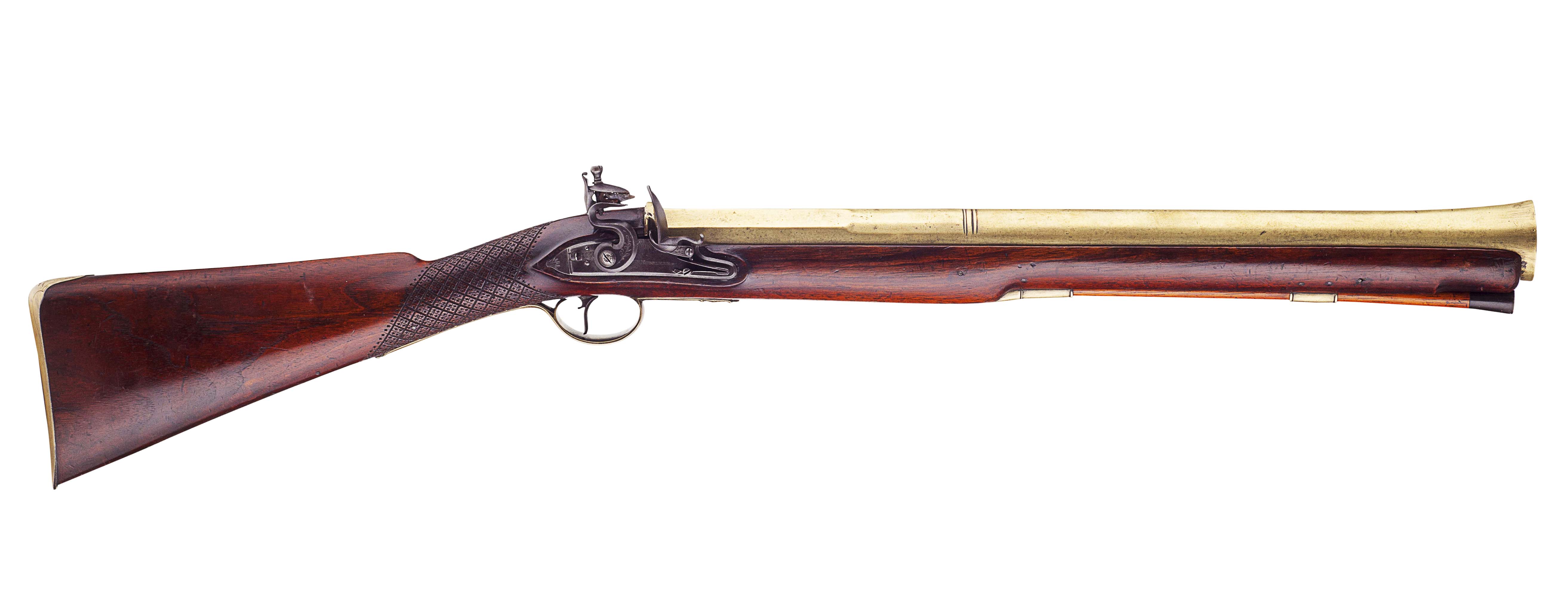The Preston Blunderbus - A rare trophy brass blunderbus barrell circa 1690
£21,000
Jacobite, Stuart, and Scottish Applied Arts
Auction: 13 May 2015 at 12:00 BST
Description
barrel by James Spencer of London, octagonal at the breech ,then polygonal , terminating in three raised lines then round section for fourteen inches to the flared muzzle, struck with gun makers view and proof marks and initials IS surmounted by a crown ,engraved at the breech in contemporary hand "This was taken from a Highlander at Preston 1715 loaded 17 balls " raised ramp cut with a back sight with iron tang , the walnut full stock mounted with brass furniture, trigger guard and heal of the brass butt engraved with martial trophies with union flag, fine deep chequered grip with each section punched with four stars within a cross, mounted with a flintlock circa 1770 signed HW MORTIMER, with its original horn tipped ramrod
Dimensions
57cm (22.5 inch) barrel 96.5cm (38 inches) overall
Footnote
Notes:
The 17th century brass barrel is marked for James Spencer (working 1689-1699) in business in Aldgate London and would have been a fine piece of the period. The contemporary engraving denoting it taken from a Highlander, suggests that it was captured by a Hanoverian solider and most likely a high ranking officer. Such a valuable trophy of war would not have been the preserve of a lower ranks.
It's re modelling in c1770 by the gun maker to the King, Henry W Mortimer, perhaps suggests that when it was taken it had a broken or damaged stock and even if not it shows the high regard in which this firearm was held, some 50 year later.
It seems highly unlikely it was re mounted for use, only to preserve and display a fine and, by 1770, historic object. The preservation and in many cases remounting of earlier historic weapons is seen throughout the Jacobite uprisings with the famous Captain Goodenough Blunderbus (collection of National Trust for Scotland, Culloden Battlefield), and various basket hilted and earlier swords and their blades being re fashioned and preserved.
A similar barrel is illustrated page 206 Great British Gunmakers 1540-1740 by William Keith Neal and David Back

